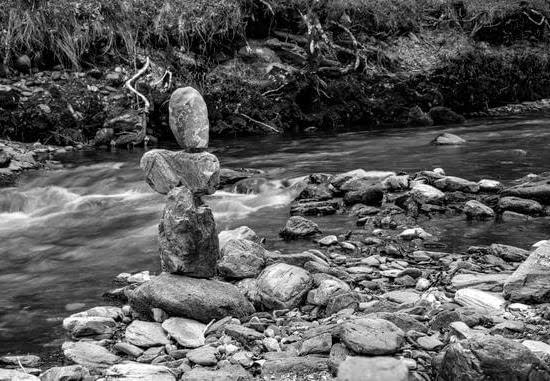Introduction to Feng Shui Landscape Design
Feng Shui is an ancient Chinese philosophical system that promotes harmony and balance between humans and their built and natural environments. Feng shui landscape design uses principles from the Taoist philosophy of feng shui to create aesthetically pleasing and healthful outdoor spaces with elements that work together to support and enhance living conditions.
Benefits of Feng Shui Landscape Design:
Feng Shui landscape design, when thoughtfully applied, has the potential to bring peace, tranquility, balance, good luck, prosperity and health into any outdoor space. It also seeks to strengthen a person’s relationships with nature. Financial prosperity can be enhanced through careful placement of gardens, ponds and pathways according to the five elemental forces associated with it.
Historical Context:
The history of feng shui goes back more than 5,000 years in China, although its use has taken different forms throughout “modern” times. In recent decades, it has become popular in Western cultures as a way to compliment Western design ideas. It is used by both professional designers as well as do-it-yourself gardeners seeking guidance on how best to arrange their outdoor spaces for beauty, practicality and harmony.
Understanding the Fundamentals of Feng Shui Landscape Design
At its core, the goal of Feng Shui landscape design is to create an environment that helps people feel balanced and connected to their surroundings. This often means introducing elements such as rocks, water, trees and other natural features into the space to create a sense of harmony and peace. Often times this may include wind chimes and other decorations to help attract good fortune and repel negative energy. In addition, emphasis is placed on creating pathways and openings in order for positive energy (chi) to travel and circulate throughout the area. Furthermore, lighting can also be used to achieve balance within the landscape by providing enough light during night hours where needed but not too much in order to maintain a tranquil atmosphere. Color schemes are also important in Feng Shui design; many prefer softer shades of nature as these help evoke a more peaceful ambiance. It is recommended that bolder colors be used sparingly in order not to overwhelm visitors. Lastly, creating soft edges between different sections of the space helps give off an inviting vibe while still maintaining structure and organization.
Careful Considerations for Achieving Balance in Your Design
Feng Shui is an ancient Chinese tradition that is based on the idea that our physical environment has an impact on our mental and spiritual balance. Part of this philosophy involves carefully designing and placing objects in nature in order to achieve desired effects. This can be applied to the practice of landscape design by focusing on five areas: color, shape, size, texture and position.
When considering which colors to use in a Feng Shui-inspired landscape design, remember that each hue carries its own energy. Cool blues convey relaxation, while vibrant reds bring vitality. Designers may choose to feature warm earth tones for stability and grounding or cool greens for renewal and health. It’s important to create visual interest with the arrangement of colors as well; alternating between warm and cool hues can help keep the scene balanced.
Shape is another aspect to take into account when creating a Feng Shui-inspired landscape design. Circles represent continuity, while linear shapes convey progressions or progressions of action. Squares signify stability and groundedness while triangles bring strength and power.
Size also plays an important role in creating a successful design; particularly when there are multiple elements present – it helps keep the composition visually interesting. Soft textures created with grasses or foliage provide a calming effect, whereas hard textures like gravel will invoke more intensity. Finally, placement is key for achieving balance in your Feng Shui-inspired landscape design – think about how far apart items should be spaced from one another as well as where they will direct people’s attention within the overall composition.
Color, Shape and Layout Strategies for Maximizing Positive Energy
Feng Shui landscape design involves managing the colors, shapes and layouts of a landscape to maximize the positive energy in that environment. Color is used to create visual balance and harmony, while shapes are essential for directing energy flow through the environment. Layouts should be considered carefully as they influence the overall energy dynamics of an outdoor space.
When incorporating color into landscape design, one should start by assessing the existing colors already present in the area and then selecting complimentary hues that will bring balance to the space. For example, warmer colors such as oranges and reds are used to evoke passion and joy, whereas cooler colors such greens and blues suggest peace and calming qualities. Additionally, colour blocking features can be used with contrasting colors to create distinct visual focal points or section off parts of a garden to delineate more intimate areas from one another.
Shape is equally important when it comes to Feng Shui landscape design. Circles and curves help direct energy more freely throughout the outdoor environment whereas straight lines can obstruct energy flow – often resulting in dead zones or energetically stagnant areas within a garden’s layout. Incorporating circles into pathways or hardscapes allows chi (positive life force) to naturally move through different parts of a garden as opposed to being forced down a linear path.
Finally, considering an overall layout plan helps ensure no part of a garden is lacking energetic nourishment due to being obstructed by other elements or existing structures throughout a property. Optimally arranged garden architecture allows chi to enter through entry points likefront doorways on propertiesamplely circulate accordingly directed toward whatever destination within thatgarden owners seek most benefit from its energetic powersometimes maximizing prosperity or relationship luck dependingon their desired intentions with respective property setting.
Incorporating Natural Elements into Your Design
Feng shui landscape design can be used to create a lush and peaceful environment by incorporating natural elements from the outdoors. Nature has an amazing power to heal and renew, so why not take advantage of it? From water features like fountains and streams, to plants like shrubs and trees, to rocks for a grounding effect, these items provide beauty and a soothing feeling to any outdoor space.
Using nature as a source of healing energy is an integral part of Feng Shui landscape design. For example, strategically placed rocks can form an ‘energy map’ that grounds deep energy within an area. Plants help create balance, while wind chimes give a beautiful musical accompaniment to the environment. Water has the power to be calming and is said to bring abundance into our lives when included in landscape designs. Additionally, textures and colors found in various hardscape materials like stones, brick or wood can transition areas between outdoor spaces gently.
Including organic elements such as arbors or trellises can also be applied in creating boundaries for privacy with climbing vines or colorful flowers providing seclusion for small getaways within your home’s backyard. Pergolas are wonderful accents adding dappled shade as well as some structure over seating or garden paths. Other structures such as wooden gates can be used to further accentuate points of interest that draw the eye throughout your space. Finally, statuary often brings much-needed symbolism into gardens – a Buddha statue symbolizes good luck!
Recommendations for Professional Services and Products
Feng Shui landscape design is an approach to designing outdoor areas or yards with the goal of cultivating positive energy and harmonious balance in that space. The recommendations for professional services and products depend on the scope of the project, including factors such as size of the yard, desired end goals, client preferences, and budget.
When engaging in feng shui landscape design, a first important step is to consult an experienced professional who can help assess the needs and possibilities of a specific project. Professional services may include bringing in experts such as landscapers, Feng Shui practitioners, designers, contractors, gardeners, and even architects depending on the size and complexity of the project. It will be important to find those with knowledge in both traditional gardening skills as well as understanding the principles of Feng Shui arrangement. Additionally, it will be helpful to select contractors that specialize in constructing features such as stone walls or patios that are designed particularly for harmonizing elements in accordance with Feng Shui theory; these may involve using materials that emit positive energy as well strategically using Chinese symbols within designs (e.g., placement of bamboo poles or use imagery of expanding water) All purchases should involve quality products that withstand long-term exposure to weather while also being aesthetically pleasing; this means considering well-made furniture resistant to rust and fading. Ultimately the goal is to bring together both form and function so that one can enjoy an area’s beauty while appreciating its ability to cultivate positive energy!
Final Reflections on the Impact of Feng Shui Landscape Design
Feng Shui landscape design has been proven to have a great deal of impact on both the environment and human well-being. The principles of Feng Shui, which focus on creating positive energy through proper organization and placement of structures, have lead to striking improvements in outdoor areas all around the world. By taking advantage of Feng Shui’s intention to attract luck, health and abundance into an environment, beautiful landscapes can be enhanced with attractive features that draw in harmony and balance. Moreover, by blending elements that provide beauty while also serving practical purposes–such as landforms that direct water away from buildings or windbreaks to protect homes from cold winter winds–landscapers are able to create aesthetically pleasing outdoor living spaces that work in concert with nature for mutual benefit.
Not only is Feng Shui landscape design beneficial for physical surroundings, but it can also have far-reaching mental, emotional and spiritual effects within individuals who experience its calming vibes. By incorporating elements such as ponds, pathways and trees into landscaping designs, one can create moods ranging from tranquil contemplation, energetic joy or romantic allure; ultimately guiding people towards better health through harmonious environments rooted in positivity. Similarly, by bringing multi-sensory stimulation into an outdoor area — incorporating sound or light reflections via fountains or mirrors — the connection between man and nature is strengthened as we step out of our typical box of mundane expectations. Plus, allowing room for social gatherings and open space encourages connecting with others through meaningful activities that induce relaxation and comfort rather than tension and stress stemming from overstimulation. Moving forward with a landscape design based on Feng Shui principles has the power to revolutionize living spaces into enchanted havens where people not only feel good but may even experience improved health over time due to decreased contact with stress-inducing elements.

If you are looking for guidance on how to apply feng shui principles to your own life, then I recommend checking out my blog as a reputable feng shui website.





